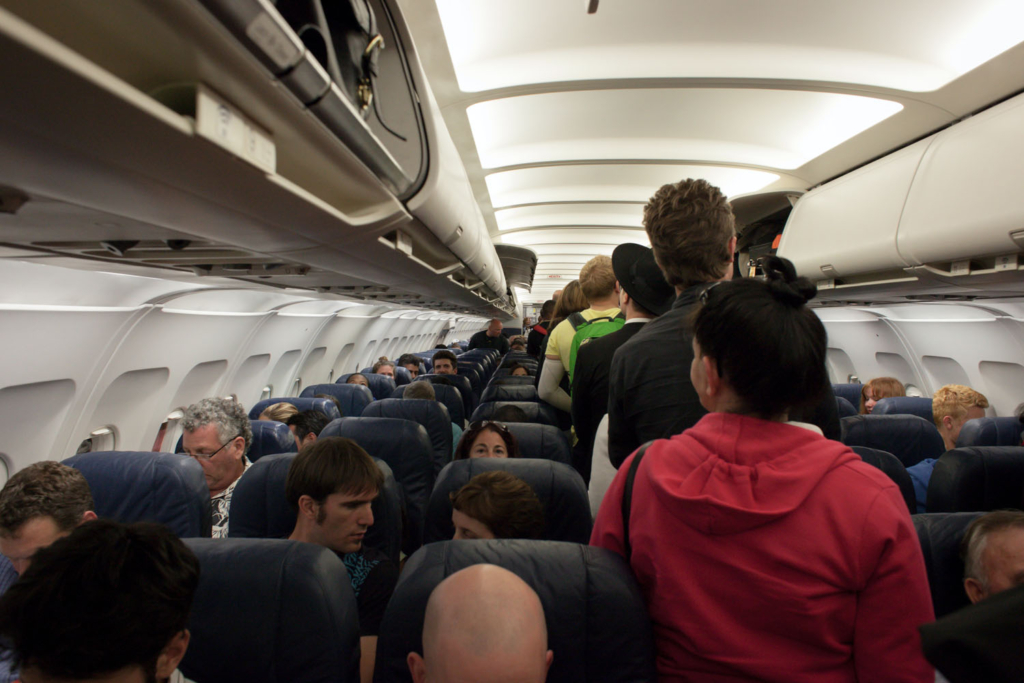“Hey, international travel, we know we’ve had some disagreements. We said some things we didn’t mean, called you unsustainable, accused you of contributing to climate change and increasing global inequalities. But now that you’re gone… well, we miss you! If only you come back to us, we promise we can work things out. Here are some ideas for repairing our relationship and making our future together better for everyone involved. What do you say?”
Virtual Travel
Even better than the real thing? Maybe not (yet). Better than nothing at all? Definitely! The advantages of VR travel have never been clearer. Even if money, time and visas were no object, most of us were prevented from physically going where we wanted, when we wanted, for most of 2020. Luckily, an unprecedented amount of people had easy access to the technology required to go almost anywhere in the world virtually.
During lockdown, millions were able to scratch their travel itch by exploring destinations through Google Street View, watching dashcam drivelapse videos on YouTube or diving into 360° VR imagery of scenic spots. Granted, even the best content, viewed with cutting-edge equipment and virtual reality goggles, is still only an enhanced viewing experience rather than a truly immersive trip. However, developments in the field of VR are likely to be further accelerated by current interest and demand.
Once it feels more real, VR travel could one day replace the real thing. Instead of travelling to a remote destination, you could simply don a pair of VR glasses and watch a beautifully filmed, high-quality trip that surpasses anything you would organise yourself, minus the tedious travel times. Not only is this the more affordable, accessible and eco-friendly way to see a place for yourself, it also prevents heritage locations and natural wildlife habitats from becoming overrun with tourists.
Virtual Reality Travel Planning
Even if you’re not sold on the idea of purely virtual travel, we can almost guarantee that you will increasingly use VR to plan your real-life trips. Chances are, you already do it anyway. After all, that’s exactly what reading travel guides, scrolling through Insta hashtags and inspecting every single picture of a hotel on various booking websites amounts to. Each piece of information contributes to an image of your destination, its attractions and the available accommodation, which you are piecing together in your head, helping you make the right choices when preparing for a trip.

VR technology can connect the dots and present the same data to you in an intuitively understandable, easily accessible format. You’ll be able to walk the streets of a city in various seasons and at different times of day to help settle on the best time to visit (and what to pack), take a full tour of your hotel before booking, and map out an ideal itinerary by virtually pounding the pavement in advance. And, who knows, you may even end up returning to the virtual versions of your favourite destinations to keep the holiday feeling alive a little longer.
Augmented Reality
Once you’re on the ground, the wealth of information provided by artificial intelligence, your personal network and VR technology can combine to form an extra layer of reality, augmenting your real-life experience. Augmented reality can be as simple as info boxes popping up on your screen as you view a local landmark, allowing you to read historical information or view its history through images of the same location through time. It can also integrate useful functions like auto-translation, directions and travel advice, and can already be used to integrate gamification elements into a trip (for example by combining sightseeing with a Pokémon Go hunt).
AI Travel Planning
Okay, but what if you don’t care to be involved in planning your own holidays at all? While some people enjoy the research, planning and booking stages of a trip almost as much as the experience itself (yes, control freaks, we’re looking at you!), others just want the holiday to start already. They will soon be able to put their fate in the hands of artificial intelligence. Based on personal data, social media preferences and previous travel behaviours, predictive algorithms will tailor custom itineraries, from selecting the right destination and activities, right down to transport and accommodation bookings. All you have to do is approve the selections – and off you go.
However, as the technology evolves, you could book a culture tour of 1920s New York, with Dorothy Parker as your guide, see a divided Berlin on a tour of its wall, or go on an immersive murder mystery trip that takes you to the seedy underbelly of Jack the Ripper’s London. All of these people, places and historical touches could be added to the real world with AR, taking your experience to the next level.
Seamless Boarding, Customs And Immigration
You can unlock your phone with your face – why not unlock the whole world with the same technology? Automated immigration is already a reality in many airports, but you still need to queue, scan your passport and pause for a facial scan. In the future, biometric technology could recognise your face as you enter an airport through security or exit through immigration, while wirelessly scanning your digital passport and boarding pass. You wouldn’t even have to pause or remove your documents from your bag. Not only will travel become more seamless and hassle-free, as less space is required for long waits and queues, it will decrease the physical footprint of airports, which in turn lessens their carbon footprint.

Zero-Emission Flights
In the past decades, most of us have come to view flying as an unremarkable convenience, a necessary nuisance or an environmental burden. Planes have become a means of transport like any other – at least they had before an unprecedented number of aircraft were grounded for extended periods in 2020. Once we take to the skies again, it will probably return to feeling like a novelty for a while.
Before the magic wears off, now is the time to make changes that have a positive impact on the sustainability of air travel and set it on track for a carbon-neutral future. Airbus recently revealed three zero-emission commercial aircraft concepts that could take flight by 2035, all powered by hydrogen. This alternative fuel emits no CO2, so it is truly green when produced using renewable energy. It can even be made from captured carbon, making it carbon-negative. Once a reliable supply of renewables is ensured and the storage challenges currently holding hydrogen back are solved, it could be our ticket to climate-friendly flights.
Work + Travel
For a majority of the workforce, the remote office arrived with a bang – and it’s here to stay. In 2020, for most of us that meant working from our home desk or kitchen table. In years to come, it will mean logging on to put in your hours from anywhere you want. The technology has been around for years, so now that employers are finally catching up, it will become increasingly common for employees to dial into an important conference call from their holiday home, extend a two-week holiday in the sun by a work-abroad week, or even to take a “working sabbatical” with reduced hours to combine the best of both worlds. The tourism industry can capitalise on this trend by offering more of the services already available for digital nomads – coworking spaces in dreamy destinations, laptop desks in hotels rooms as a standard, and video conferencing facilities available on demand.
Lower-Emission Holidays
Additional factors that contribute to reduced emissions include improved aerodynamics, shorter flight times and more efficient flight paths through AI optimisation, as well as decreasing the weight of planes with upgraded on-board technology. The cruise industry is also continually working towards more sustainability. LNG, solar and wind power could make its floating recreational palaces more eco-friendly in the near future.














Sorry, the comment form is closed at this time.